Please read the lesson material below and answer the questions for the lesson. Don't forget to include your contact information so we can review your answers and respond to your comments or questions. If you make at least 60%, you should continue onto the next lesson. Otherwise, please review the material and try again. You need to average at least 70% to pass the course. We will contact you via email within a few days of receiving your answers.
Can We Believe the Bible?
Archaeology – Old Testament
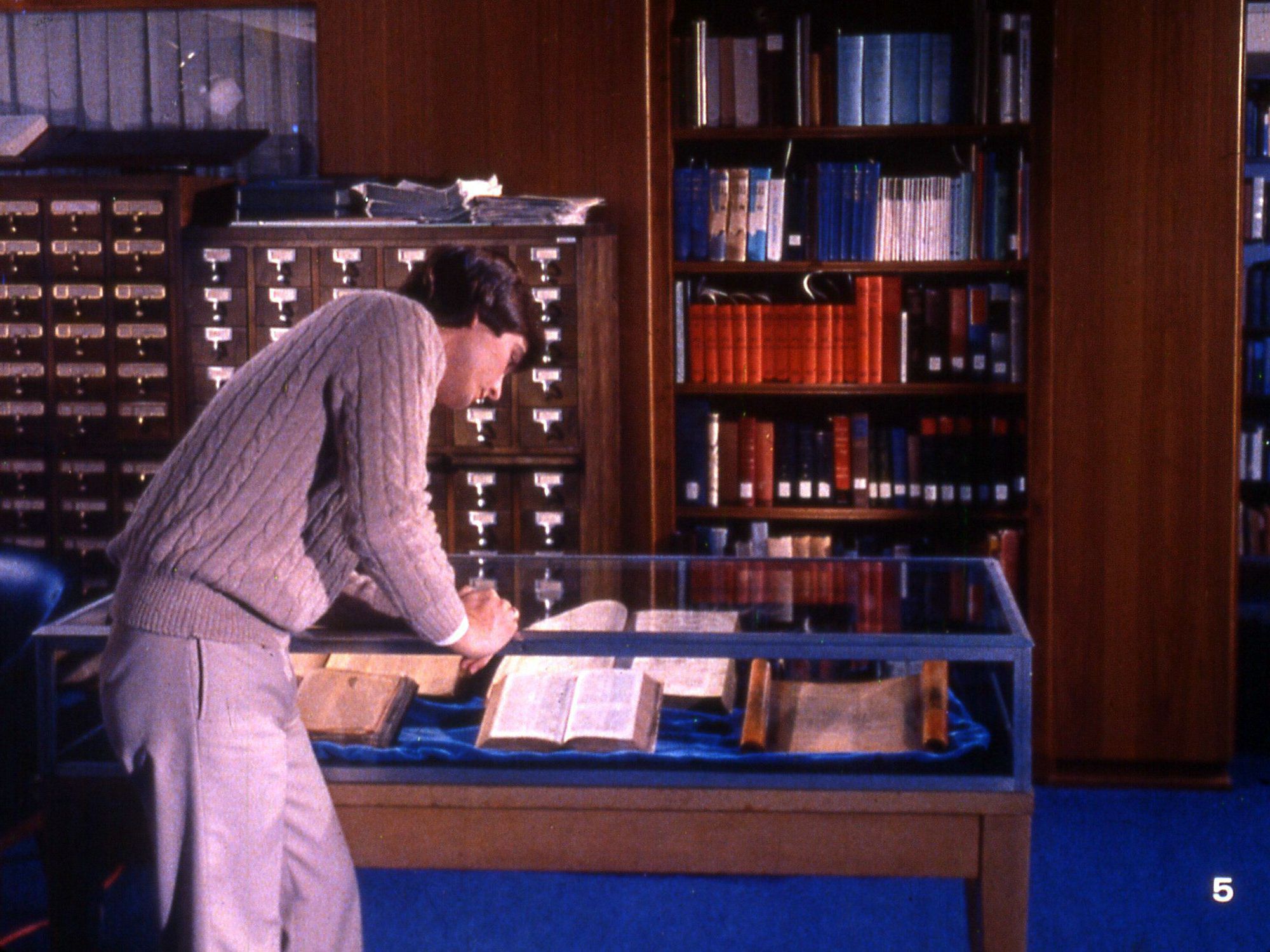
The Bible we have today is based upon the original documents. Even though these documents were written long ago, the words in them have been preserved over time by thousands of copies. When we read the Bible we are reading the same message that the people centuries ago had. The text of our Bibles today is dependable and trustworthy.

But what about the message of the Bible? What reason or evidence do we have for believing that the things that are recorded in the Bible are true and really did happen? Can we believe what the Bible says? There is much in the Bible that cannot be proven. This is because the Bible is mostly a religious book.
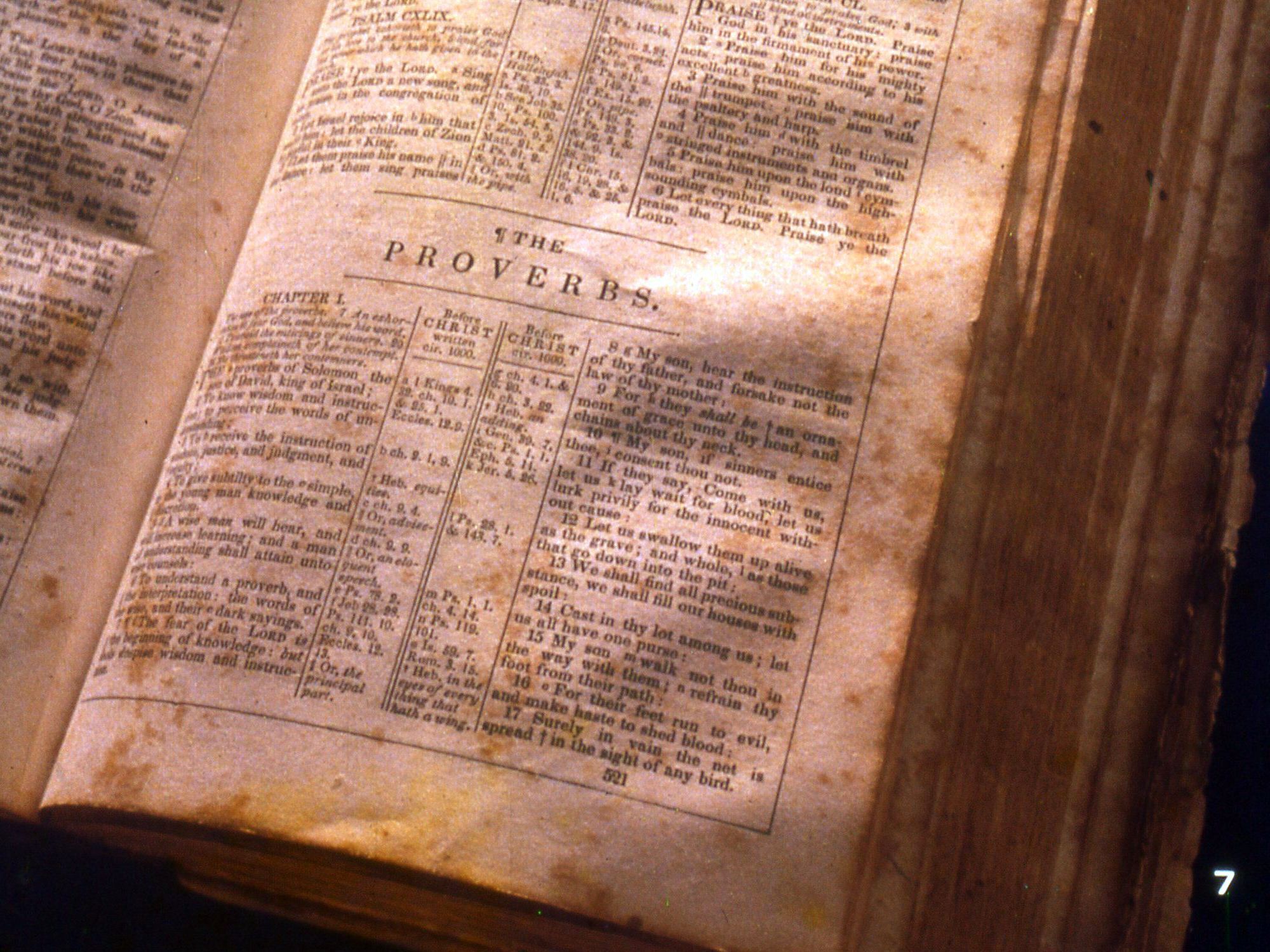
The Bible includes proverbs, laws, hymns of praise, prayers, poetry and so forth. It tells us about God and His relationship with men in the past. It also tells about Jesus Christ and how men in the past reacted to Him. But we must remember that many things inside the Bible are not the types of things that can be proven.

Although the Bible is primarily a book of faith and is not meant to be a book of history, it does tell us about many events and customs, people, and places of the Near East. It makes sense then to ask if this kind of information we see in the Bible has any evidence to prove it.

In our last lesson, we looked at the original Bible Documents. These documents were written close to the time the events originally happened. This makes it seem that there is little chance that this is fraud or a deliberate misrepresentation and makes the Bible a believable book. In this lesson we will examine a second area of evidence – Archaeology: Old Testament.

Archaeology is the study of ancient things. Archaeologists study and examine remains from the past.
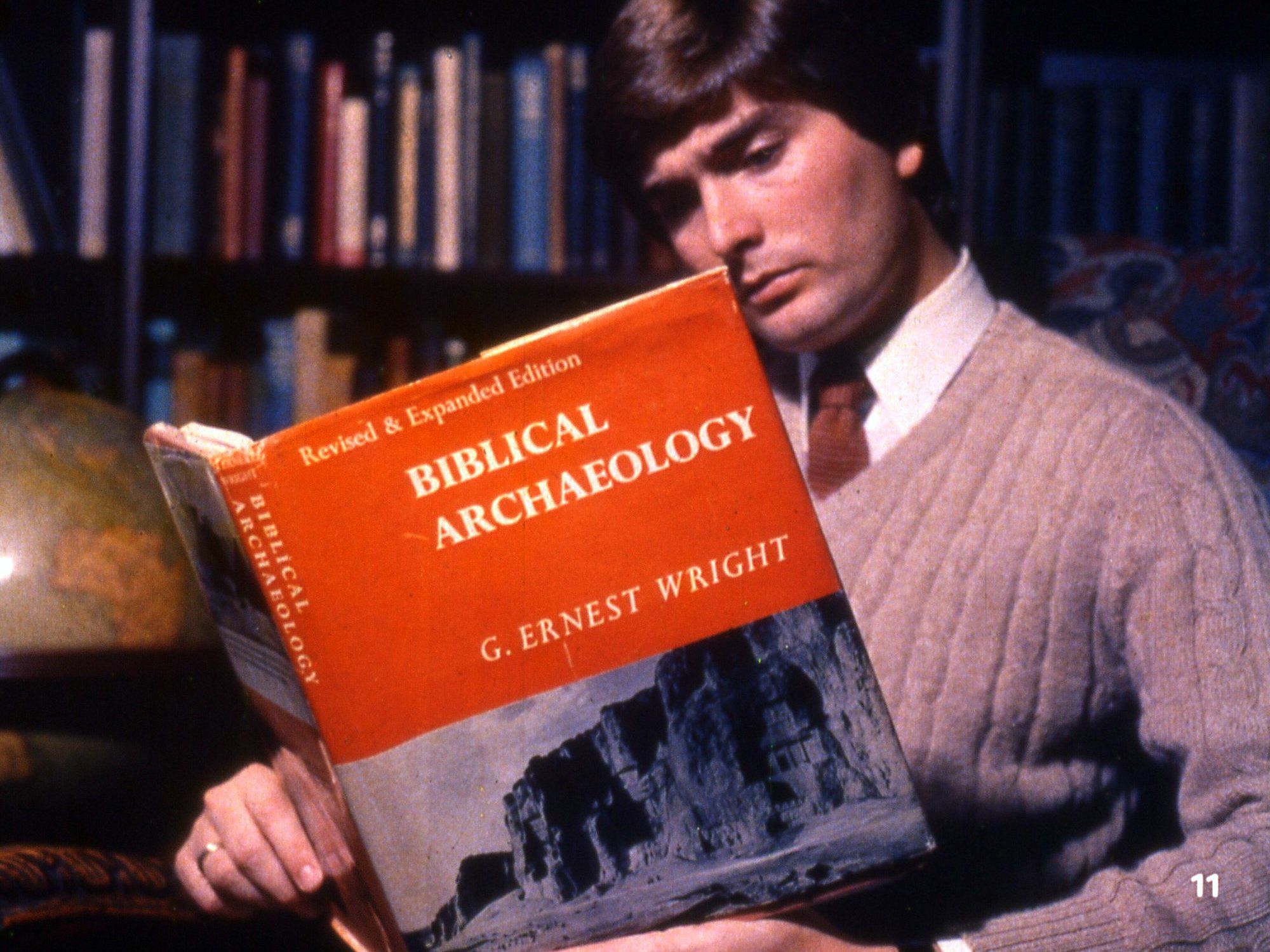
“Biblical archaeology” refers to the study of the remains that relate to the Scriptures or to life in Bible times. The purpose for biblical archaeology is not to prove the truthfulness of the Bible. But if the Bible does tell about real history, then archaeological investigation is the one tool that can look back to the past and give information about the different time periods of the Bible. In other words, we know many stories from the Bible and know that the Bible speaks specifically about different people and practices in the ancient world.

The question is: "Does the evidence we see from archaeology fit side by side with what we read in the Bible?" In this study, we will focus on the Old Testament evidence. Old Testament archaeological evidence has to do with these six main periods of Old Testament history.

Among the early events of the Bible (Genesis 1-11) are three of the well-known stories that we will consider in our study: the creation, the flood, and the tower of Babel. Of course, archaeology cannot go all the way back to the time of creation. On the other hand, the biblical account of creation has orderly, simple statements that are very different from the mythical stories that ancient people and cultures had about the same period in time.

For example, the first words of the Bible read: "In the beginning God created the heavens and the earth." Genesis chapters 1 and 2 tell how God created the light, the sky, and the sun, moon and stars, as well as His creation of plant and animal life. God also makes man and gives him authority over the creations and makes woman as a helper for man. The biblical story of creation is told very simply and can leave the reader with many questions about the details and specifics.

In the last half of the 19th century, a Babylonian account of creation was found in an excavation at Nineveh. This is a picture of one of the clay tablets of the Babylonian creation story. After the discovery and publication of these materials, several scholars decided that the creation story in Genesis is only a Hebrew version of the Babylonian creation story. But this is not what most scholars think today.

For example, in the article “A New Look at the Babylonian Background of Genesis” written by archaeologist and historian W. G. Lambert, the Babylonian story is dated back only to about 1,100 BC. This date is much too late to have been the source for the Genesis account.

What stands out more though are the great differences between the two accounts. For example, in the Babylonian story, the god Marduk splits open the goddess Tiamat and makes the earth and sky from the halves. The biblical account simply states that God created the sky and called it heaven and that he made the dry land appear and called it earth.

Another clay tablet reveals the Babylonian story of a great flood and the escape from it. While it is necessary to say that this account is filled with bizarre things and stories of gods, this Babylonian story of a flood shows us clearly what many people acknowledge to be true – that many ancient people had their own recollections of a great flood that occurred sometime in their past.

Archaeological work has also revealed that there are several ancient towers with temples built on top of them. Babylonians built gold and silver temple-tower originally built with terraces of different colors. A tower, which was built in the 3rd millennium BC, was located in Ur on the Euphrates River. The existence of these types of buildings in the ancient cultures shows that the Tower of Babel was not the only type of tower being built at that time.

The record of “The Patriarchs” begins in Genesis 12, just after the early events of the Creation, the Flood, and the Tower of Babel. Abraham, Isaac, and Jacob are often referred to as the Patriarchs of the Israelites. The word Patriarch signifies the father as “ruler” or “leader” of the family. In each family the father was the head of the clan and led the worship of the family.

(9) This map shows the lands where the patriarchs of the Bible lived. Notice the Tigris and Euphrates rivers, the city of Ur in the southeast, the city of Haran in the North and the land of Canaan in the west. This semi-circle of lands is known as the “Fertile Crescent”. Ancient records show that this was the route that all travelers used because by going this way they could avoid the Arabian Desert. The Bible says that Abraham and his family traveled the same route – from "Ur of the Chaldeans” to Haran and then to Canaan. This type of evidence that shows us that what we see in the Bible is in fact the way that things really were.

There is much archaeological evidence that shows what life was like in the Patriarchal Age. First, there is the evidence from cities. Archaeological excavations show that many towns in the biblical record existed long before the time of Abraham. One of the principle cities was Ur. This is a small lamp from Ur dating back several hundred years before Abraham. Other cities associated with the patriarchs that have archaeological evidence include Haran, Bethel, Shechem and Dothan.
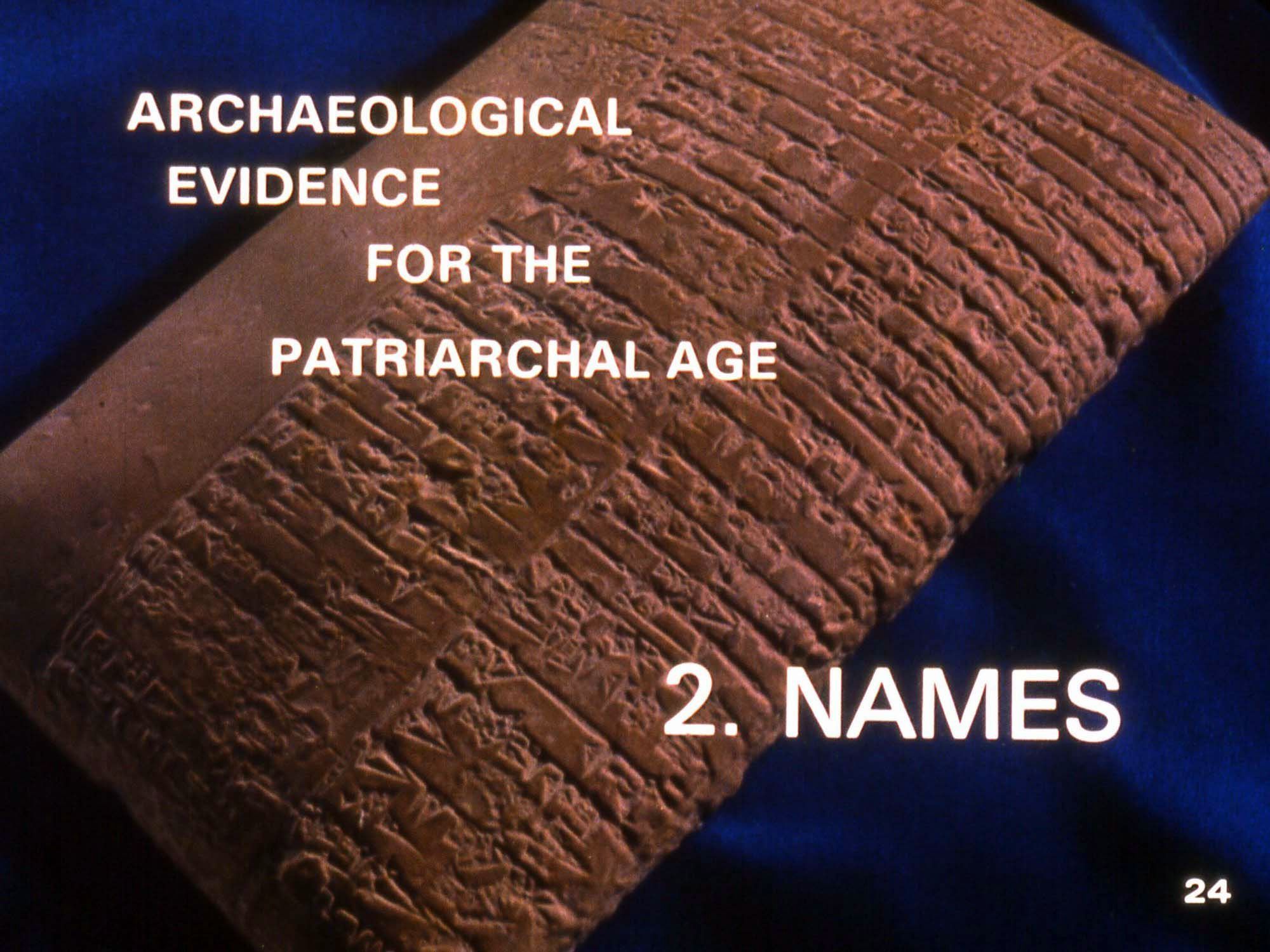
Second is the evidence from names. From thousands of clay tablets discovered in the area of the patriarchs they have discovered that many people had names almost identical to the names of people in the Bible – Abram, Abraham, Isaac, Jacob, Laban, Benjamin and so forth. These names do not actually refer to the biblical characters themselves, but this shows us that the biblical names are applied to real people and real places during those times.

Third is the evidence from customs. A large number of clay tablets give us a look into the customs of the people in the time of the patriarchs. For example, in Nuzi, a city not far from Nineveh, thousands of clay tablets were discovered that had records of customs identical to customs being practiced by the patriarchs which we read about in the Bible.

For example, when a man did not have a son to be his heir, he could adopt a son who would serve him the rest of his life and give him a decent burial. This act of the adoption took place at the city gate. The adopted son could be either a slave or a free man, but if a child was born, then the adopted son would no longer be the heir.

The Bible shows that this custom was followed by Abraham. When Abraham was childless, he chose his slave Eliezer to be his heir. But when Abraham’s son was born, Eliezer was no longer the heir.

Another interesting custom is seen in one contract found among the Nuzi tablets saying that if the bride does not bear children, she would take a slave as a wife for the husband. The contract also says that the bridegroom cannot send away the children of the slave. Genesis 16:1-3 shows that Abraham’s wife Sarah gave her maid Hagar to Abraham as a wife, and she bore him a son. Later, after Sarah had given birth to her son Isaac, she wanted to send away Hagar and her teenage son Ishmael.

Abraham was not willing to send them away until God assured him he should do what Sarah wanted. In both of these instances, Abraham and Sarah were following the practices of their time.

The Mosque of Hebron covers a cave that is said to be the cave of Machpelah, the burial site of Abraham and others in his family. The biblical account in Genesis 23 of how Abraham purchased the cave from Ephron the Hittite – the way the trade was made and even the legal description of the field and the cave – all match the description of the customs of that time. This story can be found in Genesis 23. So, when we look at the non-biblical writings of those times, such as the Nuzi Tablets, we can see that what we read in the stories of Genesis about the patriarchs is really how life was back then.

The Nuzi Tablets also refer to cities, names, and customs of the times. At the close of the 19th century and the beginning of the 20th century some scholars were very skeptical about the actual historical existence of Abraham. But as we have seen, there are good reasons for believing that Abraham and Isaac and Jacob were real people in real history.

The next period of Bible history is the time that the children of Israel spent in Egypt and their exodus from Egypt. The Israelites were descendants of Abraham through Isaac and then through Jacob whose other name was Israel.

The Egyptians wrote in hieroglyphics, a type of picture writing. Since the Israelites were merely slaves and considered unimportant to the Egyptians, their records make no reference to Israel in Egypt. But there are many reasons for believing that the Israelites were in fact in Egypt just like the Bible says.

One reason is that the name Moses is an Egyptian name, similar to the names of Pharaohs like Thutmose and Rameses. Other Levite names also apparently come from the Egyptian language – Phinehas, Hophni, Passhur and so forth.

Years before Moses was born, Joseph, the son of Jacob, had been sold as a slave into Egypt. An Egyptian papyrus from about the time of Joseph contains a list of 45 Palestinian slaves, showing that for Semites to be sold into slavery was not uncommon. It is also interesting to know that the price paid for Joseph (20 pieces of silver) was, in fact, the average price for a slave at that time.
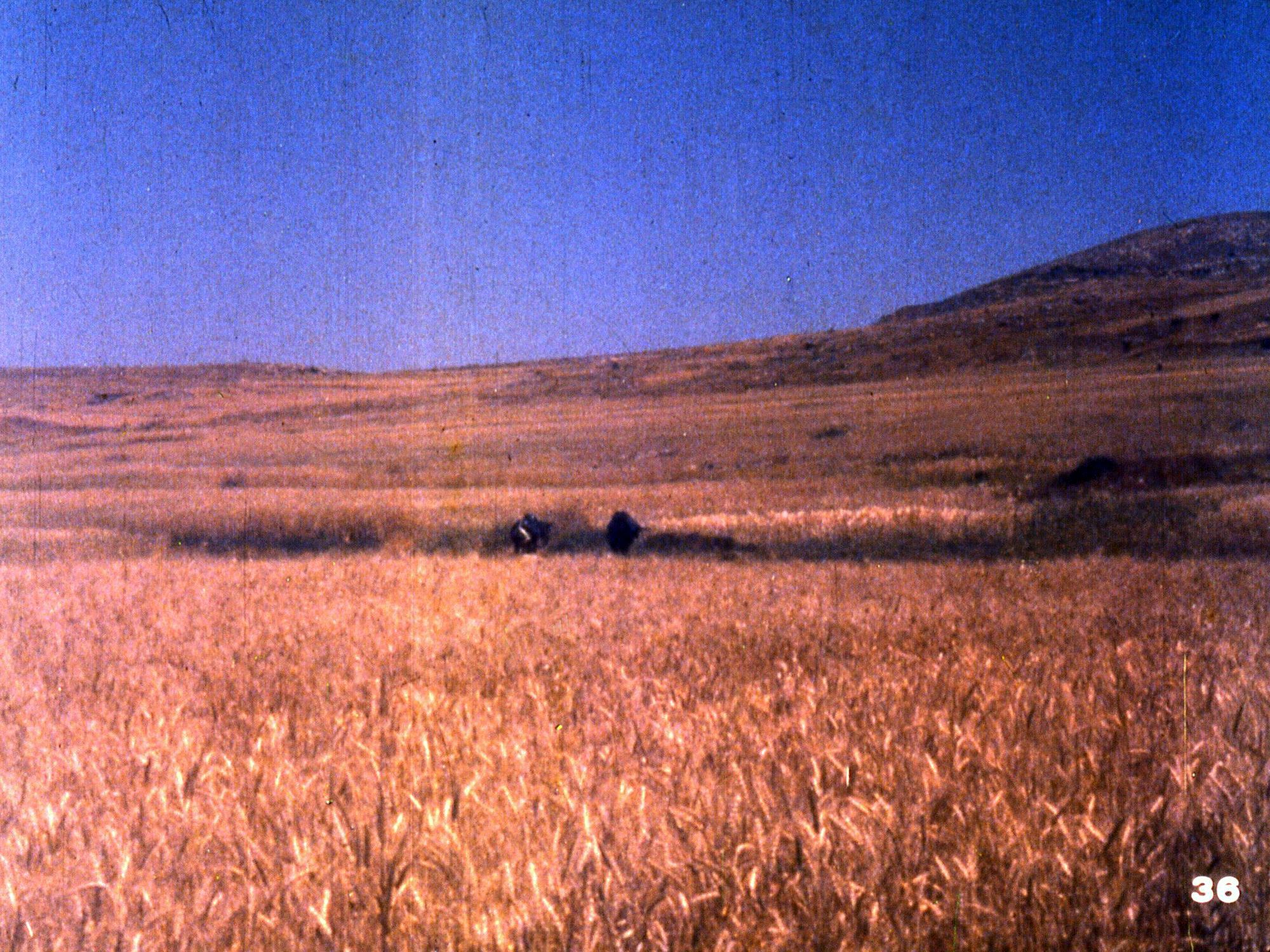
Egypt was known in the ancient world for its large grain supply. After several years Pharaoh made Joseph the governor and put him in charge of the grain.

From the Egyptian texts we learn that the “superintendent of the granaries” was a high position, and we learn also that the Egyptians kept good records of their grain supplies. The Bible says that Joseph distributed grain in the seven years of famine that struck Egypt. One Egyptian text speaks of an official whose name was Baba who said that “when a famine arose lasting many years, I issued grain to the city in each year of famine.”
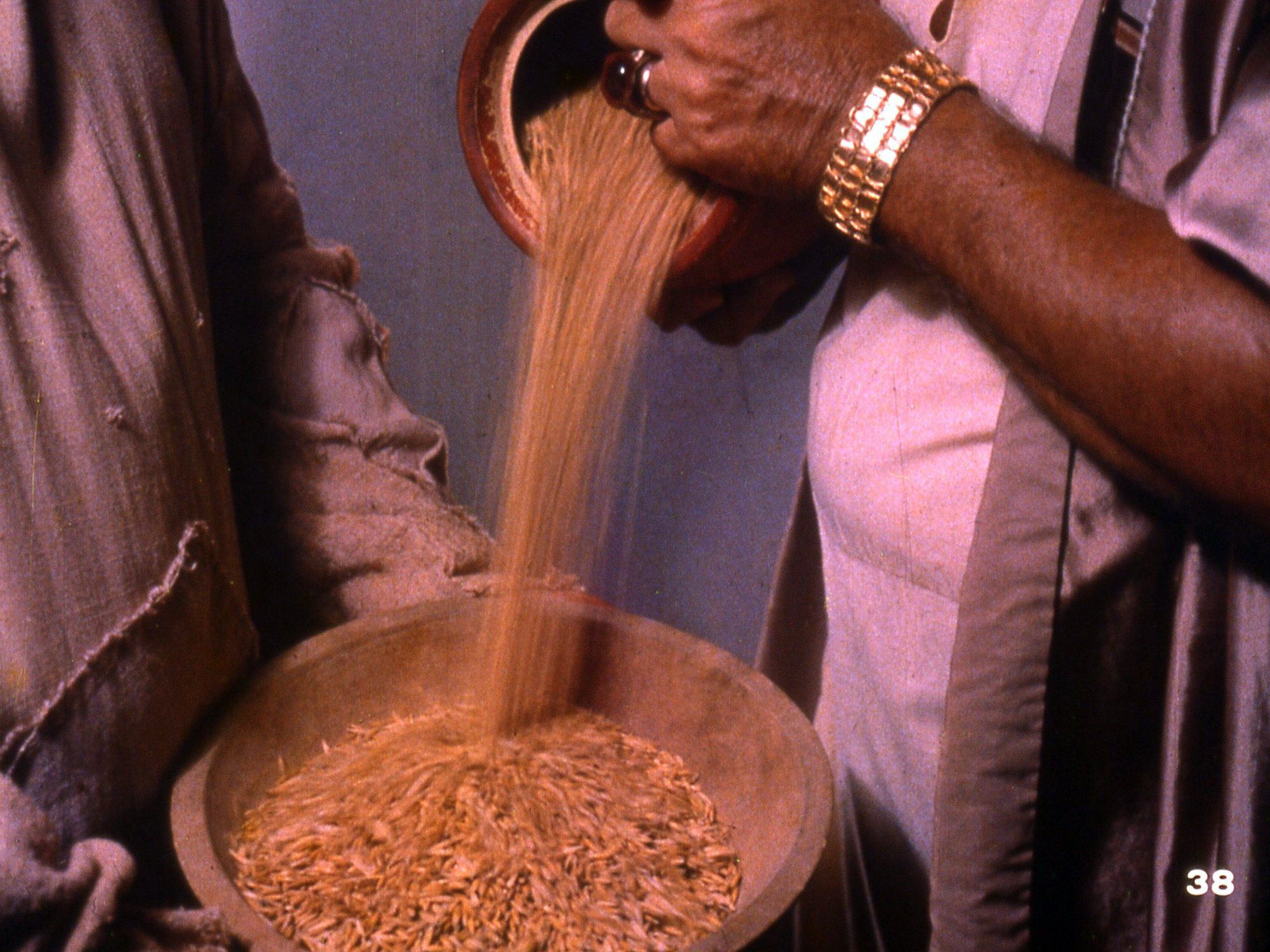
Other data from Egyptian texts also fit in well with the story we read of Joseph in the Bible. Tomb inscriptions show that dreams were very significant to the Egyptians. The Pharaohs often had many wise men who felt that they could interpret their dreams. Joseph was exalted because he was able to interpret the dream of Pharaoh. Joseph was given a signet ring, fine clothes, and a gold chain by Pharaoh. There are actually paintings of Pharaohs presenting these kinds of gifts to others.
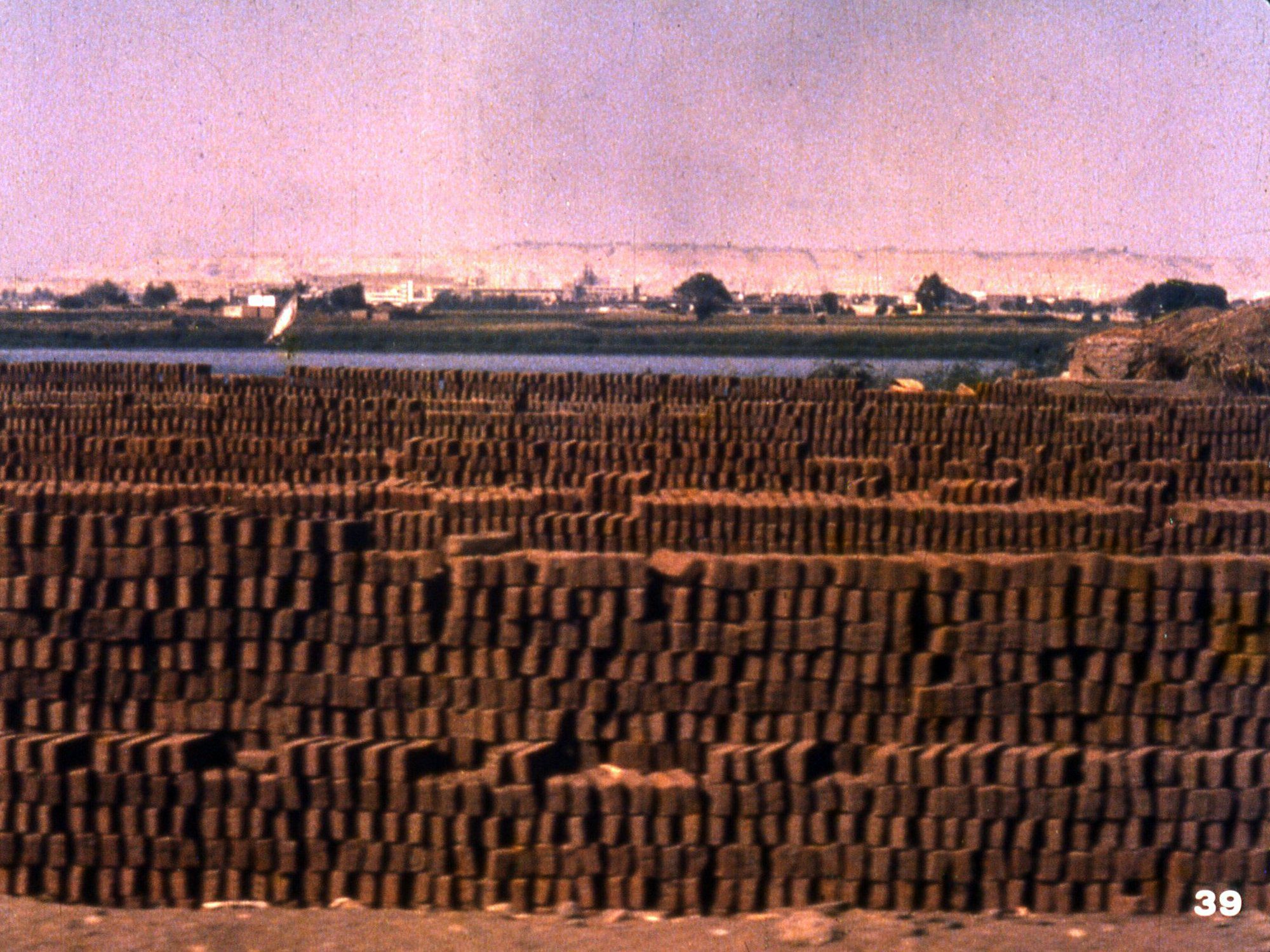
Today, along the Nile River, bricks are made and stacked in the hot sun to dry. This is similar to the time when, after Joseph died, another Pharaoh came and oppressed the Israelites with hard labor and made them work with mortar and brick. It was during these years of slavery that Moses was born. In Egypt there is a clear example of slaves that were forced to make bricks.
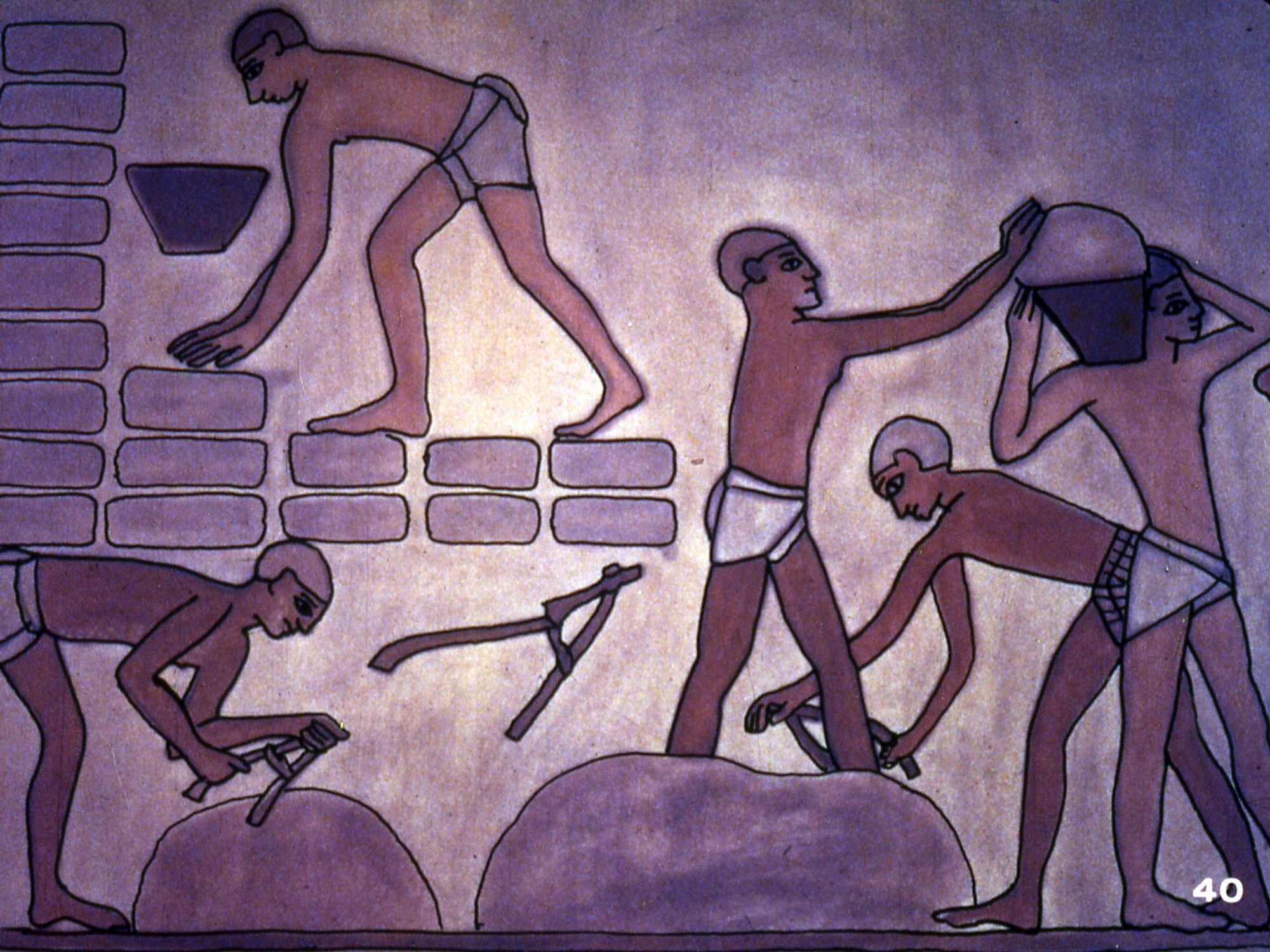
This scene from the wall of a tomb is a painting showing the making of bricks from dirt mixed with water and also the carrying of the bricks to the building. The slaves with light skin are Syrians, not Hebrews but the painting can illustrate the Israelites in their slavery making bricks.

The events in the life of Moses happened many, many years after the time of Joseph. Much of the temple at Thebes and similar buildings were already standing during the time of Moses. According to the Bible, Moses, who was an Israelite by birth, was adopted by the Pharaoh’s daughter and was brought up in the court of Pharaoh. He was instructed in all the wisdom of the Egyptians. But who was the Pharaoh when Moses was born who oppressed the Israelites and was the Pharaoh of the Exodus? We can not really be certain.

This is a broken statue of Rameses II who some people think was the Pharaoh of the Exodus. Rameses lived in the 13th century BC and reigned as Pharaoh for more than 60 years. He built new cities and temples. At Abu Simbel he had his masons carve a temple out of rock. They placed four statues of Rameses in the entrance. Each statue is about 20 meters tall and just the ear on one of the statues measures about 1 meter tall. Another idea people have is that Thutmose III was the Pharaoh of the Exodus. If so then this means that the children of Israel left Egypt about 1450 BC.

There is a beautiful temple located below the cliffs of Deir el Bahari on the west bank of the Nile which holds Queen Hatshepsut’s remains. She was the only child and heir of Thutmose I. Some scholars think it is possible that Hatshepsut was the “Pharaoh’s daughter” we read about it Exodus 2 who found the baby Moses, named him and made him her son.
 The tombs of the Pharaohs and the artwork decorating their walls show us that the Egyptian religion was obsessed with rituals and processions in connection with their burials. They also show that the ancient Egyptians had a large amount of wisdom and wealth. Portions of the fabulous wealth of the Pharaohs were placed in their tombs.
The tombs of the Pharaohs and the artwork decorating their walls show us that the Egyptian religion was obsessed with rituals and processions in connection with their burials. They also show that the ancient Egyptians had a large amount of wisdom and wealth. Portions of the fabulous wealth of the Pharaohs were placed in their tombs.
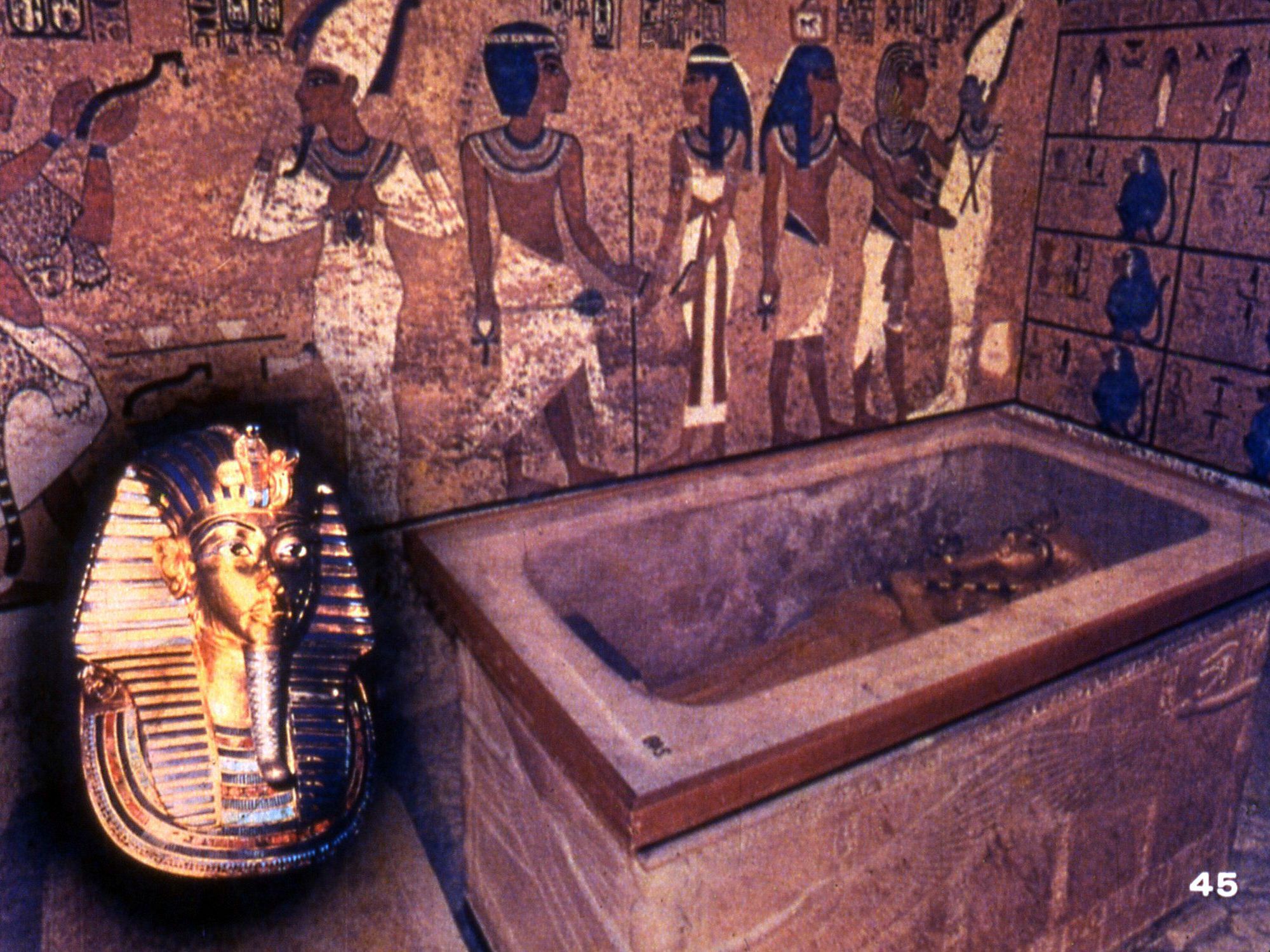
King Tut’s tomb, which was found in 1922, shows that the young king was buried with golden coffins, jewels, and many other treasures. But Moses gave up all this kind of wealth when he led the Israelites out of Egypt into the desert and into this valley where they most likely camped near Mt. Sinai. He refused to be called the son of the Pharaoh’s daughter, and he considered the abuse suffered for the Christ greater wealth than all the treasures of Egypt. (Hebrews 11:26)
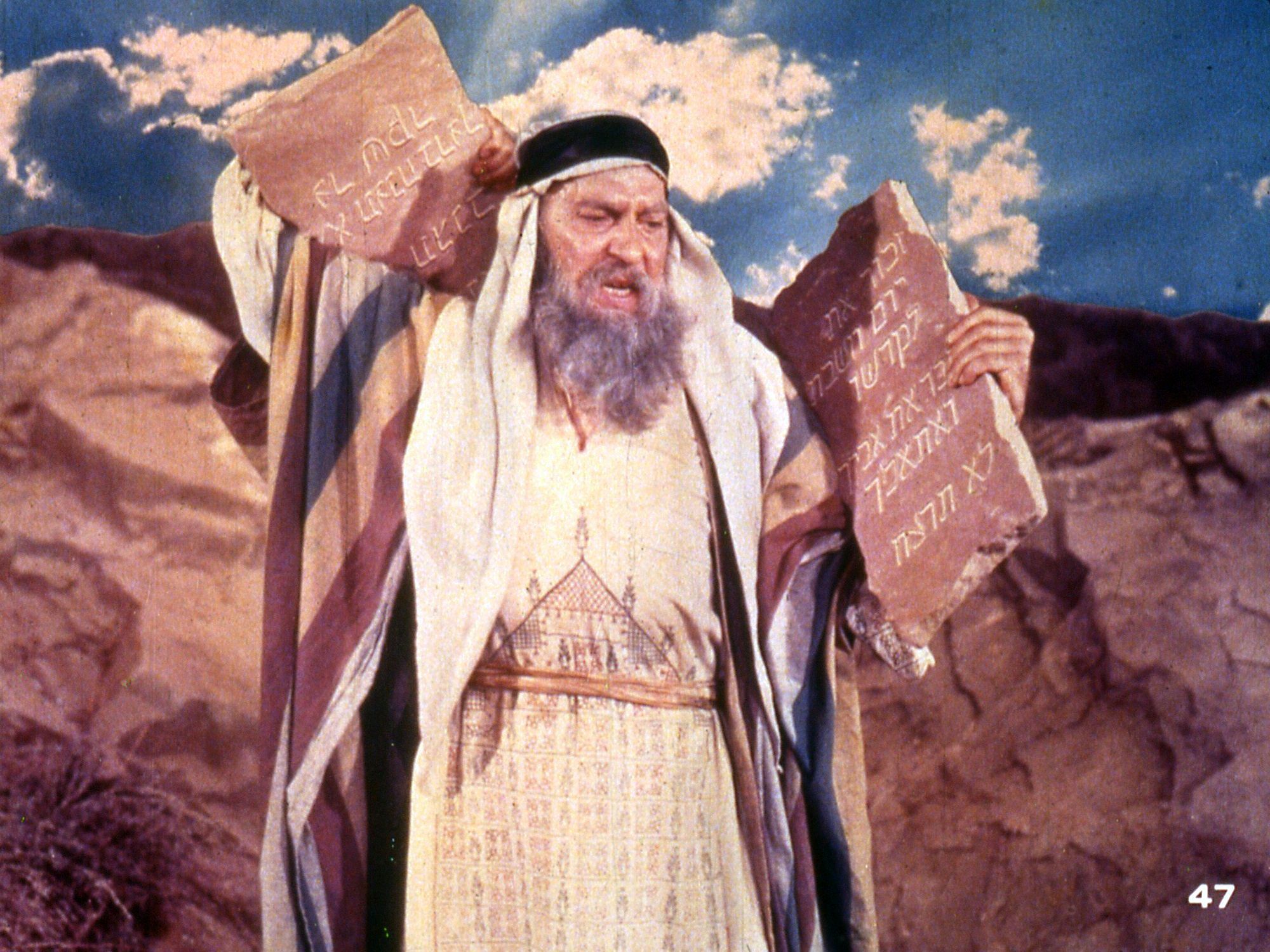
At Sinai Moses received the Ten Commandments and many other laws for the people of Israel. Years ago some scholars thought that the detailed laws could not possibly have been made during the time of Moses.

But in 1901-1902 at Susa, in Persia, French archaeologists found three broken parts of a black stone monument. The parts of the stone were put together and they discovered it was a code of laws made by King Hammurabi in Babylon about 1750 BC. The top part of the stone shows the king standing before the sun god, Shamash. Hammurabi’s code has 282 laws. Since that time, other law codes have been discovered that are even older than the Code of Hammurabi.

The desert wanderings of Israel after the Exodus lasted for 40 years. On Mt. Nebo, God showed Moses all the land he had promised to the Israelites. It was in this area, the land of Moab, where Moses died and was buried. After Moses died, the Israelites conquered and settled into the land of Canaan where they lived and existed as a nation for many centuries.

The conquest of Canaan began as Joshua led the Israelites across the Jordan River. Directly in front of them was the city of Jericho.

A large mound is all that exists now of this Old Testament city. Archaeologists have done much searching here, and at the moment there is no evidence that tells about what happened to destroy Jericho. According to archaeological records the city seems to have just disappeared from history for several centuries. But, there is evidence from other cities of Joshua’s conquest.

For example, this is a model of the city of Hazor, a strategic city in the time of Joshua. It was occupied by 40,000 people. The book of Joshua chapter 11 tells us about this city and its importance and its burning by the Israelites. Archaeologists today attribute one level of its destruction to Joshua’s conquest.

The ruins of Shiloh bring to mind the story of when the Israelites, led by Joshua, set up their tabernacle which was still there during the early years of Samuel. But according to the Bible the Philistines took the ark and destroyed Shiloh. Excavations show that Shiloh was a prosperous city in the 12th and 11th centuries but it was destroyed about 1050 BC. The Philistines carried the Ark of God to Ashod, one of their chief cities.

The image on the left in this picture is a 12th century god from Ashod. This is a Philistine mother-goddess, goddess and throne made to look like one. The people of Canaan worshiped many gods and goddesses. Also shown on the right is the god Baal who was a storm and fertility god. He was the most important of the Canaanite gods.

There are many references in the Bible to “high places” where altars were located for worship of the Canaanite idols. At Megiddo there is a Canaanite altar about ¾ of a meter high and 10 meters in diameter. The mound of Megiddo has been systematically cleared and they have discovered 20 levels of occupation.

Next in Bible history is the period of the kings, followed by the period of Jewish captivity. There is archaeological data that has been found from these time periods that is quite extraordinary.

King Solomon rebuilt and fortified the city of Megiddo. This shows part of the gate built by Solomon. The gate in this walled city was actually a double gate. It was entered by a ramp on the outside. Huge wooden doors would be closed and barred and they guarded this and other entrances.

Many remains of stables have been discovered at Megiddo and stone mangers can still be seen. These are usually known as “Solomon’s stables” even though recent investigation shows it is possible they are from the time of Ahab about 70 years after Solomon. But, it is known that Solomon had many chariots and horsemen and chariot cities and also that Megiddo was one of these cities that he used for defense.

A king of the Northern Kingdom named Omri chose the hill of Samaria as his new capital. The view from the top is very impressive. This was the capital of Israel for 2 centuries and is where prophets like Elijah and Elisha spoke against the people's idolatry and their luxury.

Omri and his son, Ahab, built the royal palace in Samaria that is in ruins today. Ahab also built strong walls around the city that would defend it from great attacks. 1st Kings 22:39 mentions the “ivory house” that Ahab built. This is speaking of the inside and the furnishings of the palace being decorated with ivory. There are many ivory carvings that are from Samaria (probably Ahab’s house) on display in museums like the British Museum and the Israel Museum. The ivory carvings, and the ruins of the walls of the palace in Samaria built by Omri and Ahab, seem to show that these two biblical characters were real people who really lived.
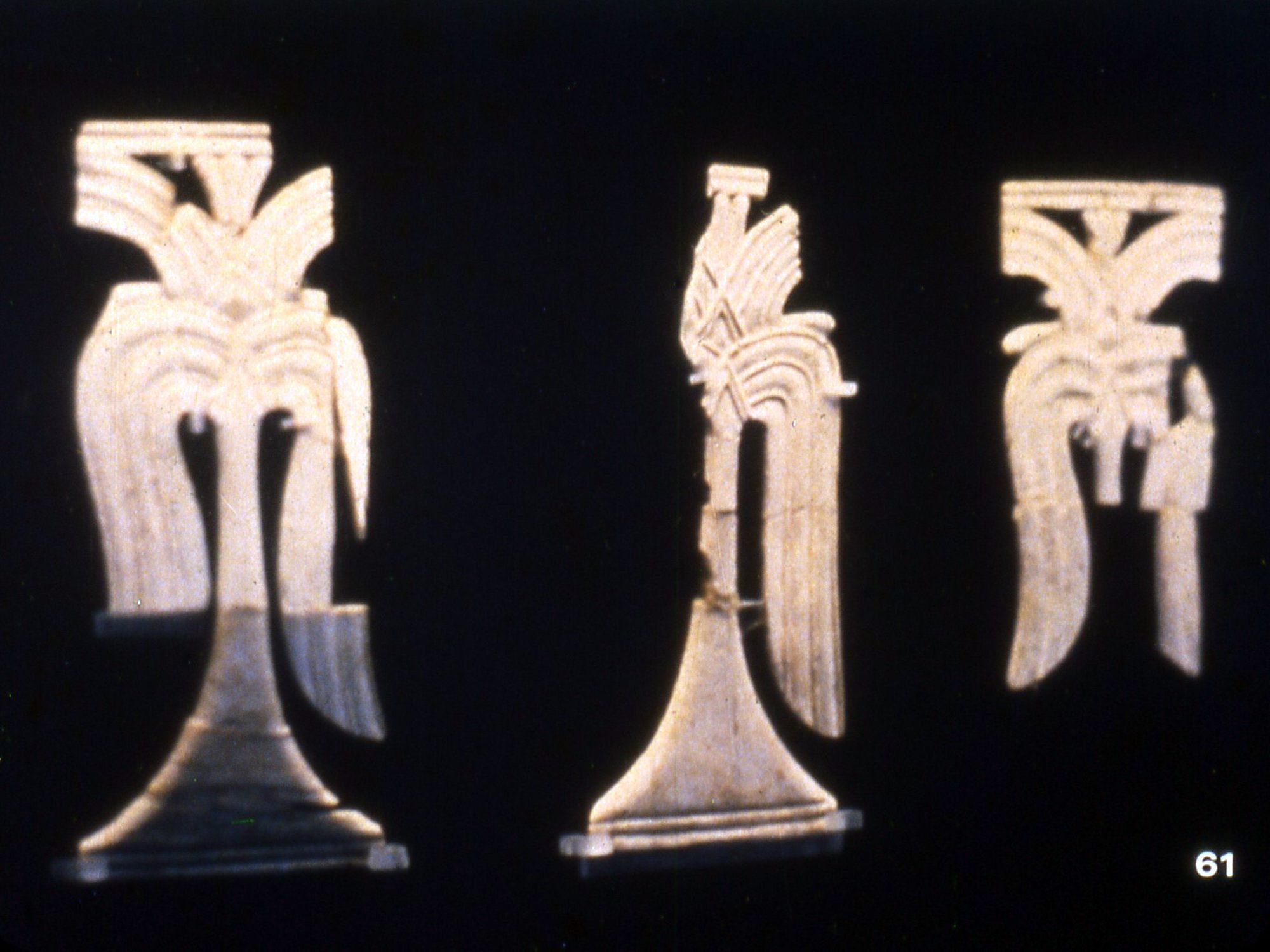
On this panel which is part of a stone obelisk we can see a figure bowing to the ground. This person is King Jehu of Israel. He is shown paying tribute to Shalmaneser II, King of Assyria. The inscription reads “the tribute of Jehu” and goes on. The Bible tells us of the reign of Jehu (2 Kings chapter 9) and here is a record outside of the Bible of him. It is even a sort of picture of him.

This is a seal with the name of Jeroboam II on it. Jeroboam II was a well-known Israelite king who ruled for about 40 years. The Bible tells about Jeroboam II and here is an ancient seal with his name on it.

The Bible mentions several Assyrian kings whose names and deeds are recorded in archives that have survived until our times. For example 2nd Kings 15:19 reads, “Pul the king of Assyria came against the land and Menahem gave Pul a thousand talents of silver.” Pul is commonly known by historians as Tiglath-Pileser III who we see images of from his palace. His inscriptions describe tributes given to him by different kings including “Menahem of Samaria”

In the 9th year of Hoshea, the king of Assyria captured Samaria and he carried the Israelites away to Assyria. Samaria was conquered in 721 BC. Records of the Assyrian king at that time, Sargon II, have been discovered which give non-biblical evidence that this event actually happened. In his records, Sargon boasts of his capture of Israelite chariots and of his exile of 27,290 people of Samaria.

Here is Sargon shown on the wall of his palace in Khorsabad (located in what is now modern Iraq). He is shown here in his chariot with his driver and attendant. This is the Assyrian king who captured Samaria and sent the Israelites to captivity.
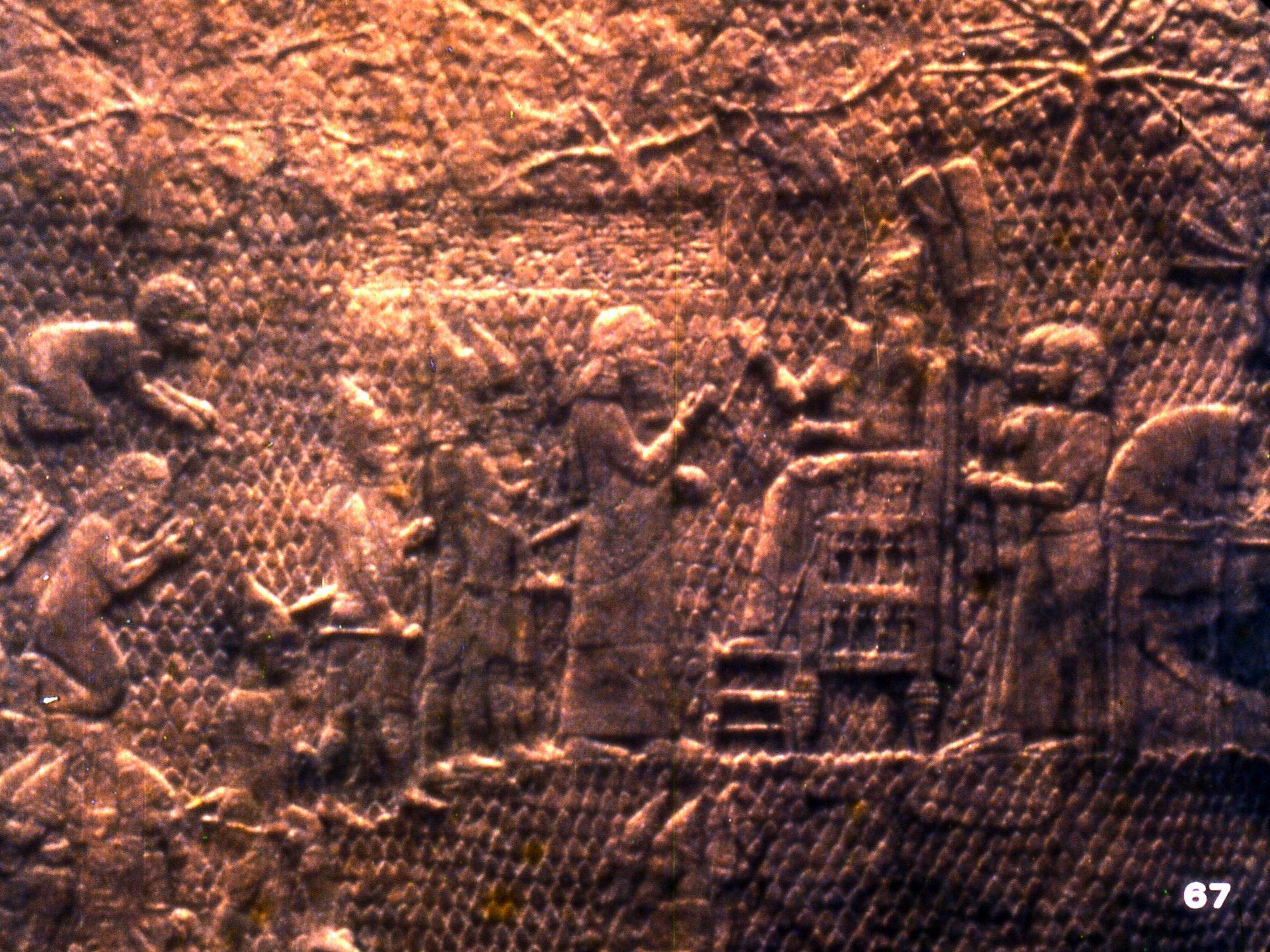
Sennacherib, the son of Sargon, attacked Judah in 701 BC. He went against King Hezekiah in Jerusalem and destroyed several Judean cities, including Lachish. The walls of Sennacherib’s palace in Nineveh show Sennacherib sitting on his throne with a footstep under his feet while prisoners and valuables from his conquering Lachish are presented to him.

Sennacherib’s record is the Assyrian record of his campaign against Judah. He says, “As to Hezekiah the Jew, who did not submit to my yoke I laid siege to forty-six of his strong cities. Himself (referring to Hezekiah) I made prisoner in Jerusalem his royal residence, like a bird in a cage.” Ancient kings often boasted in their achievements but notice that Sennacherib never claims to have captured Jerusalem. According to the Bible, he did not.

The Siloam Inscription tells about an incident found in 2nd Kings 20:20, “The rest of the deeds of Hezekiah and all his might and how he made the pool and the conduit and brought water into the city, are they not written in the book of the chronicles of the kings of Judah?” Hezekiah made a tunnel from the spring called Gihon outside the walls of Jerusalem to the Siloam pool inside. This inscription was found inside the tunnel. It tells about the workmen who worked on cutting the tunnel through the rock. The ancient lettering helps date the inscription to the time of Hezekiah .

This ancient tablet, now located in the British museum, tells us about the fall of Jerusalem. The nation of Judah was still standing during the reign of Hezekiah but more than a hundred years later, the Babylonian King Nebuchadnezzar was able to attack its capital, Jerusalem. Even though this tablet had been in the British museum for several years, it wasn’t translated until 1955. Part of it says, “And he, Nebuchadnezzar, encamped against the city and took the king prisoner.” The king referred to was Jehoiachin.

Here are the remains of a Jewish house (notice the steps). It is near the old walls of Jerusalem. Archaeologists say this house was destroyed in the final destruction of Jerusalem by Nebuchadnezzar in 586 BC. So the fall of Jerusalem that we have a record of in the Bible is also shown in documents, inscriptions and remains from both Babylon and Jerusalem.

During their long years of captivity in Babylon the Jews were always looking forward to when they would return home to Palestine. The release from the captivity came just like God had promised. He never intended to leave His people as prisoners forever.

It was Cyrus the king of Persia who allowed the Jews to return from their captivity in Babylon. (36) In this writing on a cylinder, Cyrus tells us about his capture of the city of Babylon and also about returning those who were imprisoned to their homelands. Ezra 1:1-3 says that Cyrus, King of Persia, made a proclamation, “Whoever is among you of his people let him go up to Jerusalem.”

The Bible says that, some time later, Nehemiah took the lead role in rebuilding the walls of Jerusalem. From 1961-1967, Dr. Kathleen Kenyon directed expeditions in a study of the walls of Jerusalem. She discovered that the line of walls on the eastern side was in fact built by Nehemiah. Nehemiah’s walls are the older structure on the right.

So there are many reasons that we believe the Old Testament. In the Bible cities are listed and named, cultures and customs are shown, kings and kingdoms are identified and we KNOW from archaeology that these things were real and actually existed. Aside from the information in the Bible we know the names and dates of many kings of Israel and Judah. We know about their battles, their victories and their defeats from Egypt, from Assyria and from Babylon.

The late Dr. G. Ernest Wright, a leading scholar in the field of biblical archaeology, has said, "For the most part, archaeology has substantiated and illuminated the biblical history at so many crucial points that no one can seriously say that it is little but a collection of myth and legend."

And the amount of evidence keeps growing and growing. One article about these new discoveries is even called “They’re Digging Up Bible Stories.”

Can we believe the Bible? We have seen some of the archaeological evidence on the Old Testament. In our next lesson we will look at the evidence of the New Testament.
Original text and slides from "Can We Believe the Bible?", ©1983 Gospel Services, Inc. Used by permission. Various edits and new audio recordings by the Bible Study Center 2006-2014.
